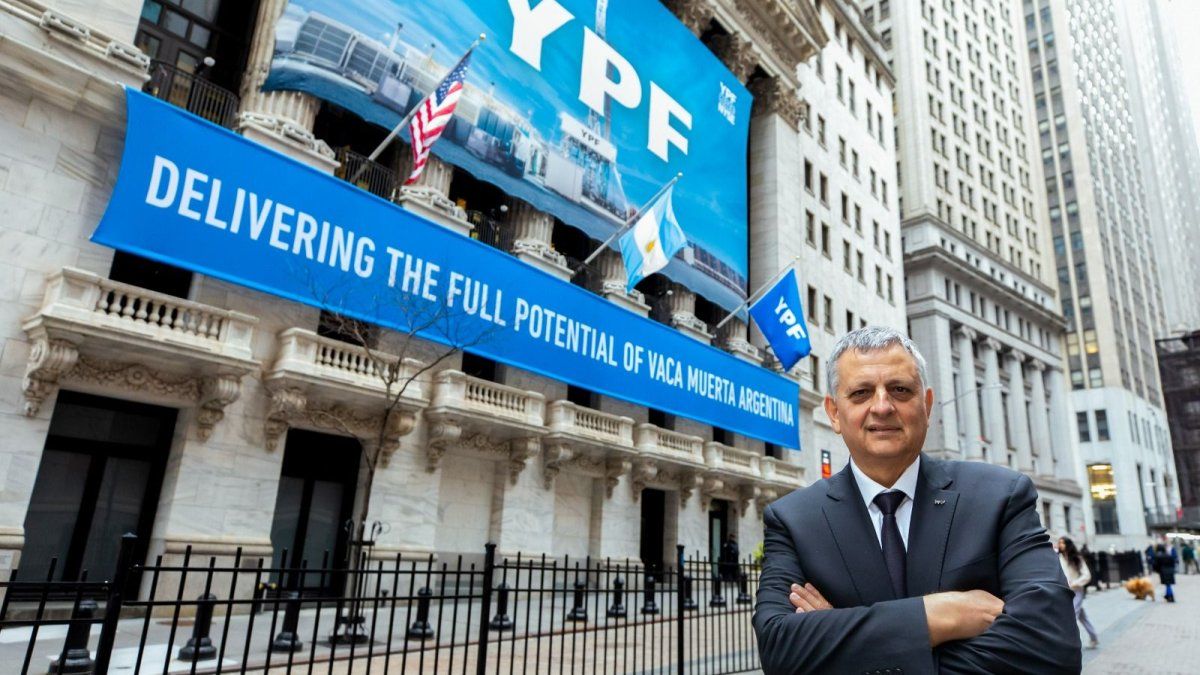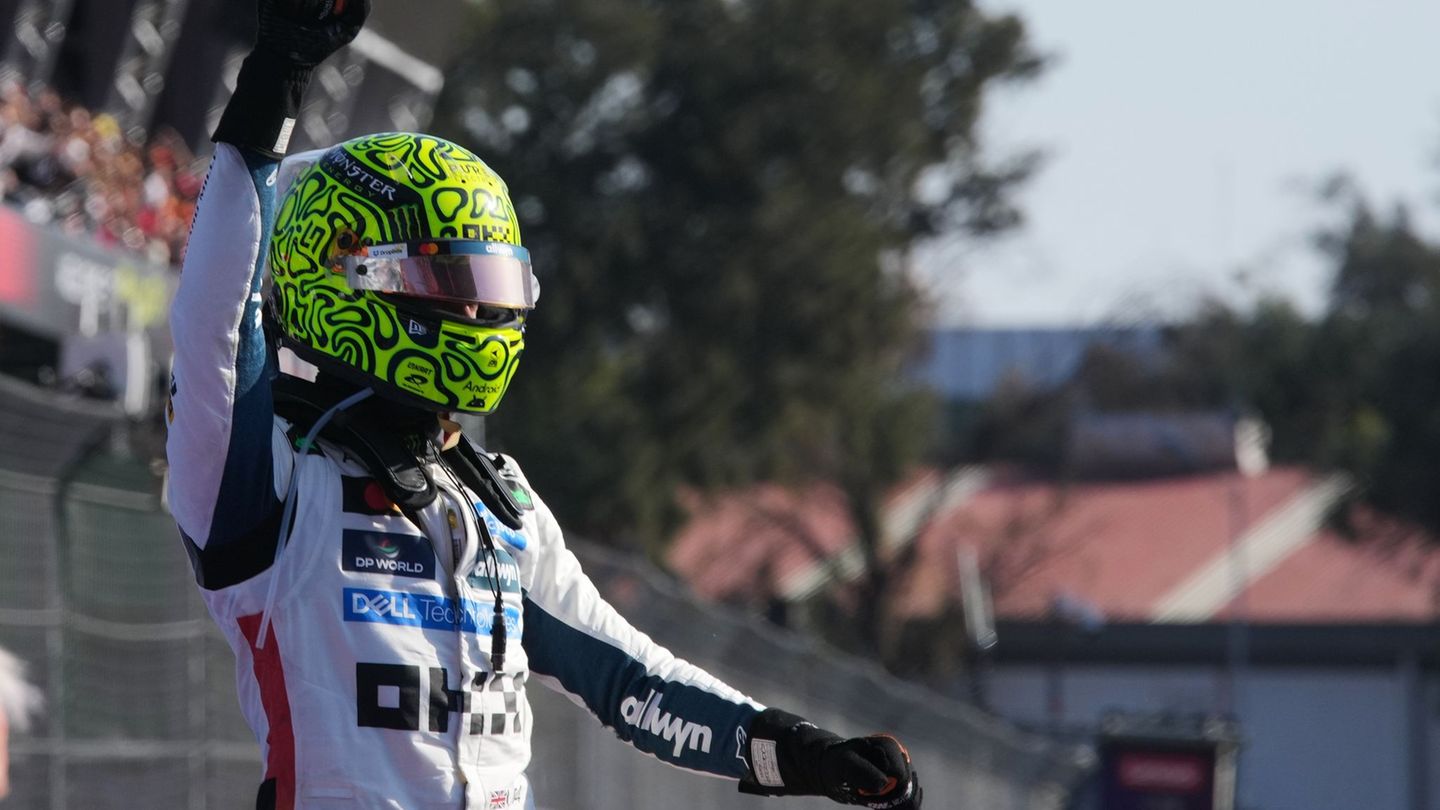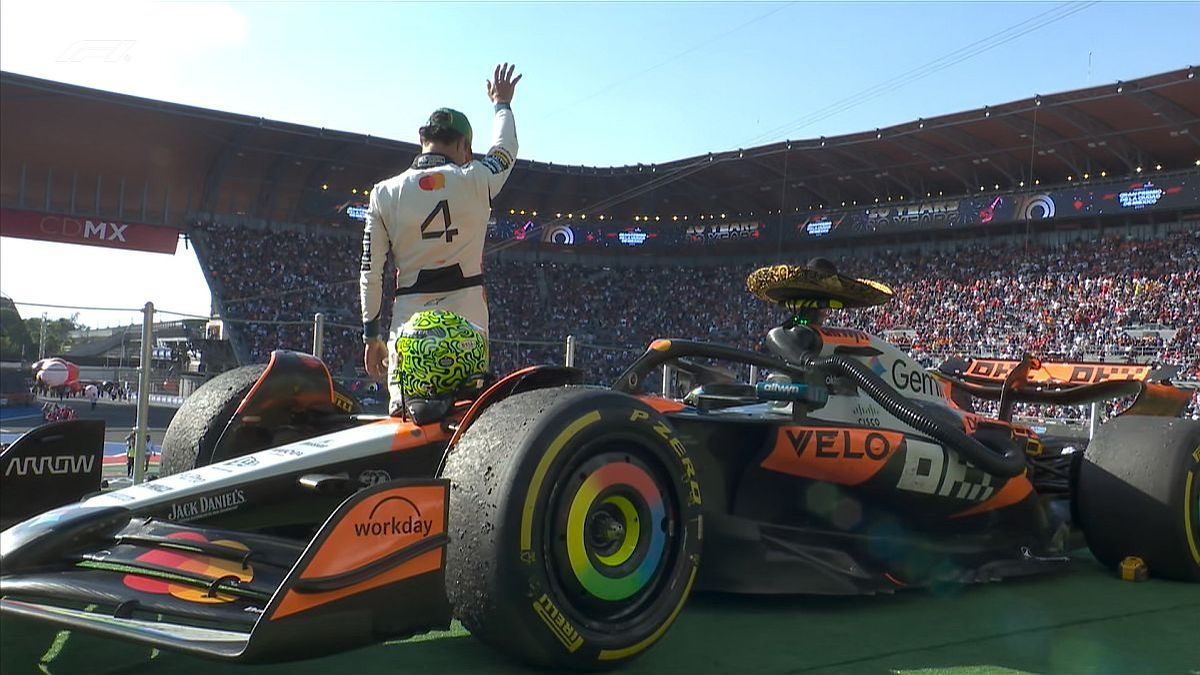Marín announced that, according to his estimates, by 2030, YPF will become an operator of about 2 million barrels per day and in a 1 million barrel producer per day (BOE)in addition to reaching energy exports for 30,000 million dollars annually. “Our goal is to be among the ten largest unconventional hydrocarbons in the world in 2030,” said Marín, capturing the attention of investors. With a technical approach and a management centered on efficiency, he highlighted the superiority of the Argentine site: “In terms of performance, Vaca Muerta is better than any other unconventional site of the United States, so we have concentrated on its production.”
The situation, part of the equation
The head of YPF opened its presentation by underlining YPF’s resilience in the face of the volatility of the oil market. “There is not enough energy for the world. In the long term, the price of oil The equivalent Au $ S70 is going to be worth by barreland it is the price at which we are doing our calculations. Anyway, we can develop Vaca Muerta with a price of $ 45, ”he said. In addition, he stressed that“Vaca Muerta can develop with a value of US $ 45, because the cost of the barrel integrating the Development Curve of Vaca Muerta is US $ 24 dollars per barrel“, Which reinforces the economic viability of the deposit even in adverse scenarios.” We are going to develop Vaca Muerta, “he said with conviction.
The YPF corporate roadmap, presented to international investors, is based on three strategic pillars: the intensive development of Vaca Muerta, the expansion of the Liquefied Natural Gas business (LNG) and an integral transformation both productive and financial. This approach seeks to reposition YPF as a global actor, with a clear emphasis on the consolidation of its operational matrix towards the Shale, which by 2030 will represent more than 90% of its total production, reaching 1,640 kboe/d of a projected total of 2,085 kboe/d. “We are transforming ourselves into a” Pure Shale Player, “with Vaca Muerta as the heart of our strategy,” said Marín, marking a turning point in the company’s history.
The potential of Vaca Muerta was a central axis, reinforced by its comparison with deposits such as permit. Marín emphasized that the unique geology of the Argentine site, along with its enormous volume of resources, positions it as a global leader. “Not only competes with Permies; it exceeds it in quality and opportunities,” he said, highlighting that 10% of his wells has barely drilled, with more than 10,000 to develop, which implies an investment opportunity of more than 200,000 million dollars. “That is why we have focused our efforts on maximizing its production,” he reiterated. In this sense, YPF projects significant growth: by 2030, oil production will exceed 410 thousand barrels per day to 820 thousand, while natural gas will increase from 68 million cubic meters per day (mmm³/d) to 174 mmm³/d, mainly driven by the development of shale.
4×4 plan, toyota well and efficiency as axis
A key component of its strategy is the 4×4 Plan, which Marín presented as the engine for the coming years. This plan seeks to multiply by four the production of oil and gas in four years, accelerating the development of Vaca Muerta through intensive investments, advanced technology and strategic alliances. “The 4×4 is more than a goal; it is a commitment to position YPF as a global energy reference, with Vaca Muerta as our main asset,” he explained, underlining the company’s execution capacity. “We know what we have to do,” he said, projecting confidence in the execution of the plan.
Marín also highlighted the Toyota Well model, an initiative inspired by the efficiency principles of Japanese automaker, designed to revolutionize the drilling of wells in Vaca Muerta. “We are focused on the efficiency program,” he said, explaining that this approach allows to reduce operating costs by 30%, saving between 1,500 and 1.8 billion dollars, by optimizing processes from planning to execution. “Toyota Well is our commitment to operational excellence, carrying drilling at efficiency levels never seen in the region,” he said, positioning this model as a key differentiator against global competitors.
As mentioned, the expansion plan presented in New York had as its cornerstone the export goal for US $ 30,000 million by 2030, an objective that Marín defended with concrete data and a clear route. This milestone, he explained, requires duplicating the production of oil and gas, focusing on strategic markets such as Asia, India and Europe. “When you think of energy, you think about the long term, so we think that we must take as reference a value for the barrel of oil in the order of the US $ 70,” he reflected, underlining YPF’s strategic vision. “It is not an aspiration; it is a commitment supported by the capacity of Vaca Muerta and the Operational Fortress of YPF,” he said, generating enthusiasm among investors.
Argentina LNG, a long -term project
The Argentine LNG project, another pillar of the expansion plan, was presented as essential to achieve export goals. Marín stressed that this initiative, now in alliance with Shell after the exit of Petronas, advances towards an initial capacity of 10 million tons per year, with potential to turn Argentina into a relevant exporter since 2027. “Argentina LNG is not just a YPF project; it is the door for cow to dead to the world with competitive energy,” he said. The development of the LNG is supported by five key pillars: the new Fiscal Regime Rigi, the incorporation of global strategic partners, agreements with first level buyers, the quality and scale of the resource in Vaca Muerta, and a solid financing structure, with 70% via Project Finance and a competitive objective price of 7.5 dollars per million BTU.
YPF’s operational autonomy was another point that Marín highlighted with emphasis. He thanked the government for giving him freedom to lead the company without political interference, which has allowed to implement structural reforms. “This independence gives us agility to make decisions based on profitability and long -term sustainability,” he said, highlighting that this confidence reinforces YPF’s credibility in international markets.
Operational efficiency, a stamp of its management, also had an outstanding place. Marín detailed how YPF has reduced the drilling time of wells in Muerta cow from 40 days to 10.2 days, optimizing costs and accelerating development. “YPF has a lifting cost in cow in a $ S5 per barrel“He revealed, positioning the company as a competitive operator against global standards.” Every day we save is proof that we can lead with excellence, “he said, connecting this achievement with the superiority of Vaca Muerta.
Faced with possible global crises, Marín was prepared to take advantage of opportunities. He indicated that a prolonged fall in the price of crude oil would allow to renegotiate contracts with suppliers, reducing operating costs. “We do not paralyze ourselves to adversity; we adjust and continue investing with strategic vision,” he said, underlining resilience as an essential component of his plan.
In infrastructure, the CEO highlighted the Vaca Muerta Sur pipeline, a project of US $ 3,000 million led by a consortium in which YPF participates with 27%. This work, funded without direct intervention of the State, seeks to resolve logistics limitations to evacuate crude from Neuquén. “It is a sign that public-private collaboration can generate high-impact results,” he said, reinforcing his message to investors.
The GNL project, beyond Argentina LNG, also had a prominent place, with a five -year financial plan that reflects its economic viability. Marín explained that the flow of free funds (FCF) will be negative between 2025 and 2029. However, once the project between regime, YPF projects a positive FCF of US $ 1,000 million. As for the “Upstream” segment LNG, CAPEX will grow to stabilize at about US $1,000 million around 2028-2029. “We are building a profitable and competitive project, with long -term export potential,” said Marín.
Finally, Marín closed with a reflection on the cultural change he drives in YPF. As a symbol of its commitment to austerity, he mentioned the sale of two executive planes of the company. “We want a management focused on results, not in privileges,” he said, advocating a mentality that inspires confidence in markets and Argentine society. “Our goal is a YPF that leads the energy future with a lift cow as a global standard,” he concluded.
Source: Ambito




